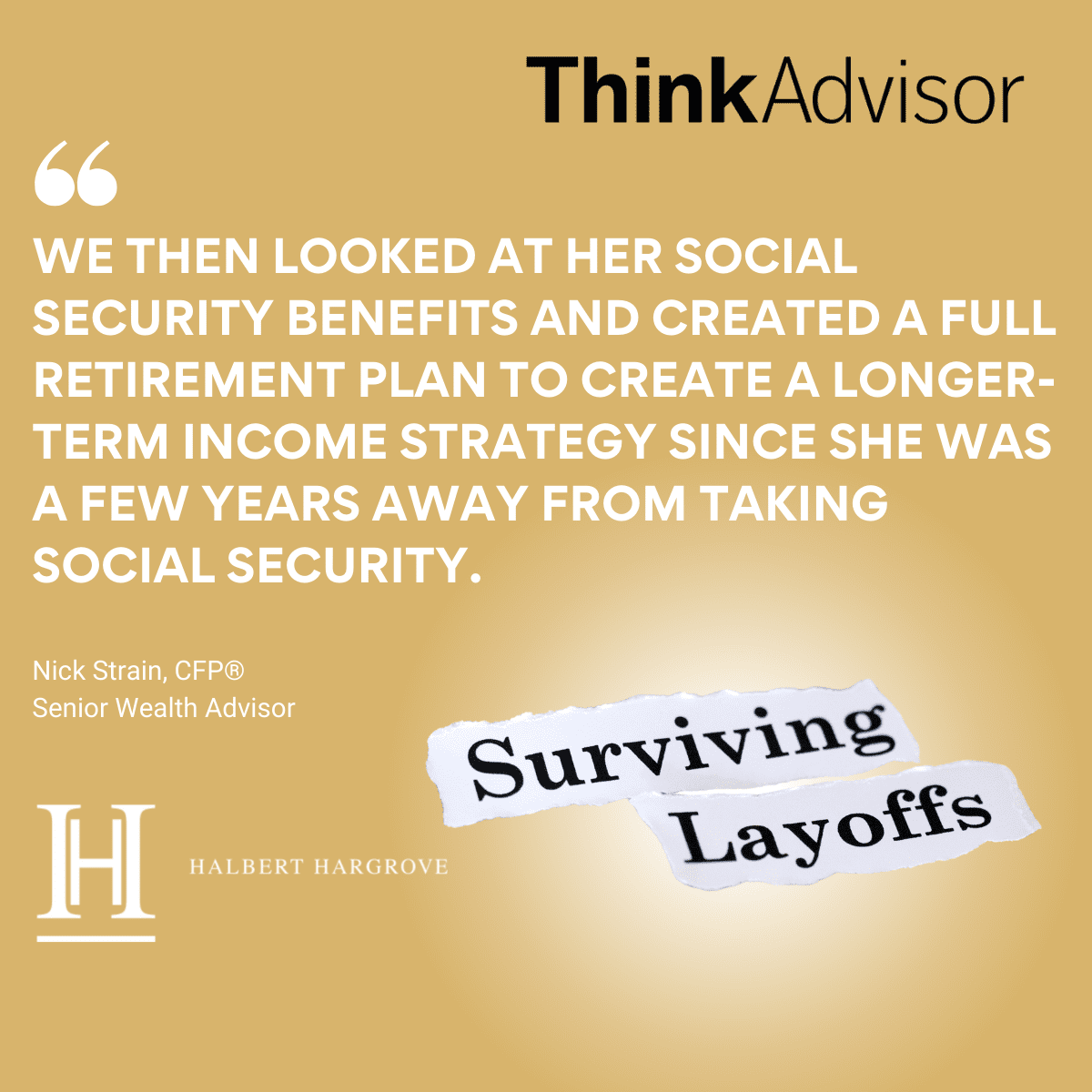By Victoria Zhuang, ThinkAdvisor featuring Nick Strain, CFP®, CPWA®, AIF®, Senior Wealth Advisor at Halbert Hargrove
Layoffs can be devastating to a client’s well-being and finances.
“It will shake you to the core when a dear client replies to your email with, ‘A few things have changed.
Bank eliminated my job and let me go this morning. I need to read and sign the severance package,’” said Jay Beynon, a financial advisor with Axió Capital Advisors at Stifel Independent Advisors.
Despite a strong jobs report last month, layoffs have dominated headlines early this year and are unlikely to cease. A recent study by Resume Builder found that nearly 4 in 10 employers expect layoffs in 2024. So if clients haven’t been personally affected yet by layoffs, they or someone close to them might be soon.
But like any crisis, layoffs can also be an opportunity.
Advisors who show up in a client’s lowest moments can set themselves up to retain that client’s business when the good times return, and ultimately over the long term.
From helping clients cut expenses and rethink retirement plans to weighing COBRA against other health insurance options, opportunities abound for financial advisors to demonstrate value after a layoff.
We asked advisors to share what their top advice would be for a client who’s been laid off, and/or what they do to help such clients.
See the accompanying gallery for what they had to say. The responses have been edited for clarity and length.
Rethink your taxes and income
I recently worked with a new client who had recently been laid off. Her Cobra had started to run out at the end of 2023, just as our client engagement started. We aimed to align our recommendations for health insurance, income, taxation, and investments.
However, the first priority was to determine her health insurance options since COBRA was running out and open enrollment was closing within the next couple of weeks. I was able to refer the client to a health insurance broker that was able to help her look at insurance options within the Covered California Insurance platform to keep her health insurance premiums lower since we thought we could keep her under the income thresholds. The next priority was to determine how much income she needed and from which sources.
I was able to determine how much income she should take on a monthly basis from her Rollover IRA, her brokerage account, and cash savings in conjunction with running the projected income through our tax planning tool to confirm she would be under the Covered California tax limits. As we were discussing income strategies, the client applied for unemployment benefits, and her claim was accepted, which was very helpful. We then looked at her Social Security benefits and created a full retirement plan to create a longer-term income strategy since she was a few years away from taking Social Security. It brought a lot of relief that she could retire, and she knew where and how much income she would receive in the future.
- Nick Strain, senior wealth advisor and wealth advisory committee chair at Halbert Hargrove


